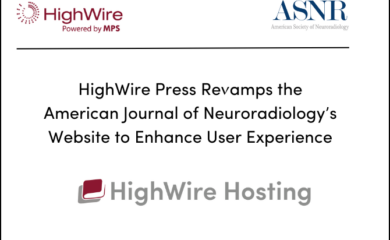While preprints have integrated into journal workflows, primarily through the transfer of manuscripts between preprint servers and traditional journals, what’s particularly intriguing is the evolution happening around peer review. Preprints are not just affecting the peer review process; they are advancing it in novel ways.
HighWire Press has been at the forefront of this evolution, partnering with Cold Spring Harbor Laboratory, the host of BioRxiv and MedRxiv. These preprint servers utilize HighWire’s Bench Press submission system for receiving and screening preprints and HighWire’s hosting platform for displaying them along with associated comments.
A host of services and protocols are emerging to further refine and innovate the peer review process. For instance, Review Commons and Peer Community In (PCI) are just two examples of services that perform independent peer review of preprints. These services are part of a comprehensive list called “Reimagine Review,” compiled by ASAPbio, a non-profit organization promoting the evolution of the peer review process.
In this blog, we will delve deeper into these changes, exploring how preprint review fits into the broader research ecosystem. The blog covers the Best Practices Webinar Series by Highwire Press, sharing insights from industry experts like
The Evolution and Impact of Preprints: A Snapshot
Traditionally, when an author submits a paper to a journal, it undergoes a lengthy process of editorial evaluation and peer review before it becomes publicly accessible. Preprints disrupt this model by allowing authors to share their work almost immediately, even before it undergoes formal peer review. This doesn’t negate the possibility of journal publication but rather complements it by offering a faster route to disseminate research findings.
The Proliferation of Preprint Archives Across Disciplines
As Richard Sever, Assistant Director at Cold Spring Harbor Laboratory, pointed out, the last few years have witnessed an explosion in the use of preprints across various disciplines. ArXiv, the “granddaddy” of preprint servers, has been around for more than 30 years and hosts over two million preprints, primarily in computational science, physics, and math. Following its model, Cold Spring Harbor Laboratory launched BioRxiv in 2013 for the biological sciences and MedRxiv in 2019. Together, these platforms now host over 200,000 preprints.
The growth isn’t confined to these fields. The industry has seen the launch of discipline-specific community preprint servers like ChemRxiv for chemistry, SocArXiv for social sciences, AgriRxiv for agricultural sciences, EarthArXiv and PsyArXiv, among others.
Commercial Alternatives and Enabling Technologies
Springer Nature has a majority share in Research Square, Elsevier purchased the Social Science Research Network, and Sage has launched Advance. Other platforms like Authorea and Preprints.org, run by publishers John Wiley and MDPI respectively, also function as preprint servers.
Preprints are more than just a medium for early sharing; they are an enabling technology that stimulates evolution within the scholarly communication ecosystem. They serve as hubs that enable discovery and discussion before formal publication, and they offer a venue for work that might not typically find a place in traditional journals.
By serving as such hubs, preprints also pave the way for innovations in peer review, decoupling it from the traditional journal-centric model and allowing for more flexible, community-driven evaluation processes.
Exploring PCI, PCJ, and Review Commons
The Double Publication System: PCI’s Role
Peer Community In (PCI) serves as a unique platform that operates on a double publication system, where manuscripts are first submitted as preprints to open archives. PCI then takes these preprints and subjects them to a rigorous peer review process. The platform currently has a one-way notification system with Hal, a French open archive, but aims to develop full interoperability with all open archives. This will allow PCI to receive notifications of new submissions from these archives and, in turn, send back notifications of their recommendations.
Interoperability and Open Archives
PCI’s goal extends beyond providing a platform for peer review; it aims to create an ecosystem that is fully interoperable with open archives. When a preprint is submitted to an open archive, PCI is notified. Likewise, when PCI makes a recommendation about a preprint, that information is sent back to the open archive where the preprint is hosted. This seamless flow of information enhances the visibility and credibility of the preprints.
PCJ: The Journal for PCI-Recommended Preprints
Peer Community Journal (PCJ) serves as the publishing arm of PCI. Authors whose preprints receive a recommendation from PCI can choose to publish their work in PCJ. Launched in November 2021, PCJ is a Diamond Open Access Journal, meaning it is free for both authors and readers. It accepts only PCI-recommended preprints and has already published more than 200 articles.
Review Commons: A Different Approach to Preprint Peer Review
Review Commons offers a journal-agnostic approach to peer review. Unlike traditional peer review systems that are tied to specific journals, Review Commons allows manuscripts to be submitted to the platform without any journal affiliation. The focus here is solely on the scientific merit of the paper, rather than its suitability for a particular journal. This process is managed by professional editors who ensure that the review is both rigorous and unbiased.
Efficiency and Cultural Shift
Review Commons collaborates with 21 partner journals, providing an efficient pathway for the reviewed preprints to be transferred for formal publication consideration. This collaboration eliminates the often cumbersome cycles of repeated and redundant peer review associated with the traditional publishing model. By doing so, Review Commons aims to bring about a cultural shift in how peer review is conducted, focusing more on the quality and integrity of the science presented rather than its fit for a specific journal.
Transparency and Collaboration
Review Commons emphasizes transparency in the peer review process. All reviews are posted alongside the preprints, providing a transparent account of the manuscript’s strengths and weaknesses. Most partner journals also adopt this transparent approach by posting the reviews next to the published paper. This level of openness fosters a collaborative environment, making the publication process more efficient and transparent.
The Editorial Process: Professional Oversight for Quality Assurance
The editorial process at Review Commons is managed by professional editors who oversee the peer review process from start to finish. Their role is to ensure that the reviews are thorough, fair, and focused on the scientific content of the paper. This professional oversight adds an extra layer of quality assurance, making sure that only scientifically sound papers make it through the review process.
The Partner Journals: A Network for Efficient Publishing
The 21 partner journals associated with Review Commons play a crucial role in streamlining the publication process. Once a preprint has been reviewed and posted on Review Commons, it can be easily transferred to any of these partner journals for formal consideration. This network of journals provides authors with a range of options for formal publication, all while avoiding the need for additional rounds of review.
Conclusion: Redefining Scholarly Peer Review Systems
The advancements in preprints and peer review systems represent a fundamental shift in how scientific research is communicated, evaluated, and disseminated. Platforms like Review Commons, Peer Community In (PCI), and Peer Community Journal (PCJ) are redefining the traditional peer review process, emphasizing transparency, efficiency, and scientific merit over journal fit.
What stands out is the collaborative ethos that is emerging. Whether it’s the network of partner journals with Review Commons or HighWire Press‘ collaboration with BioRxiv and MedRxiv, these partnerships indicate a move towards a more interconnected scholarly community. This is not merely about streamlining existing processes but about creating a more inclusive and comprehensive system for scientific discourse.
As we look to the future, the question is not whether these changes will become mainstream, but how quickly we can adapt and integrate these innovations into the broader research ecosystem.



